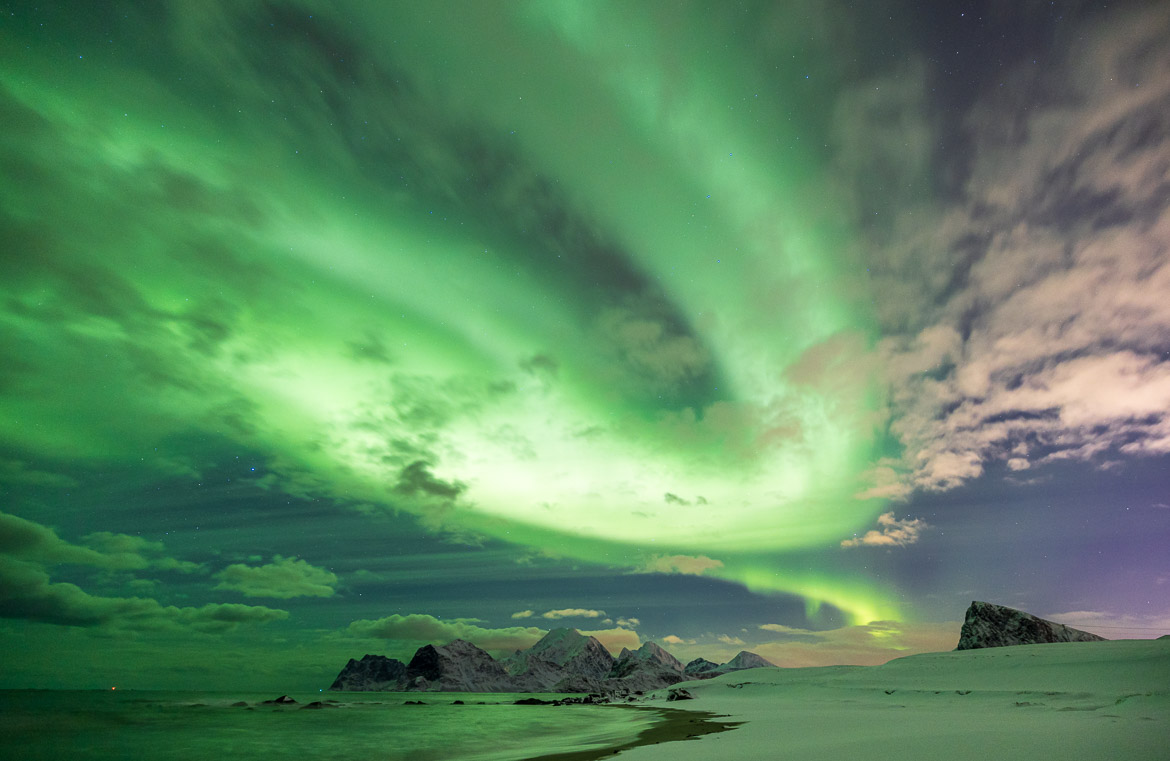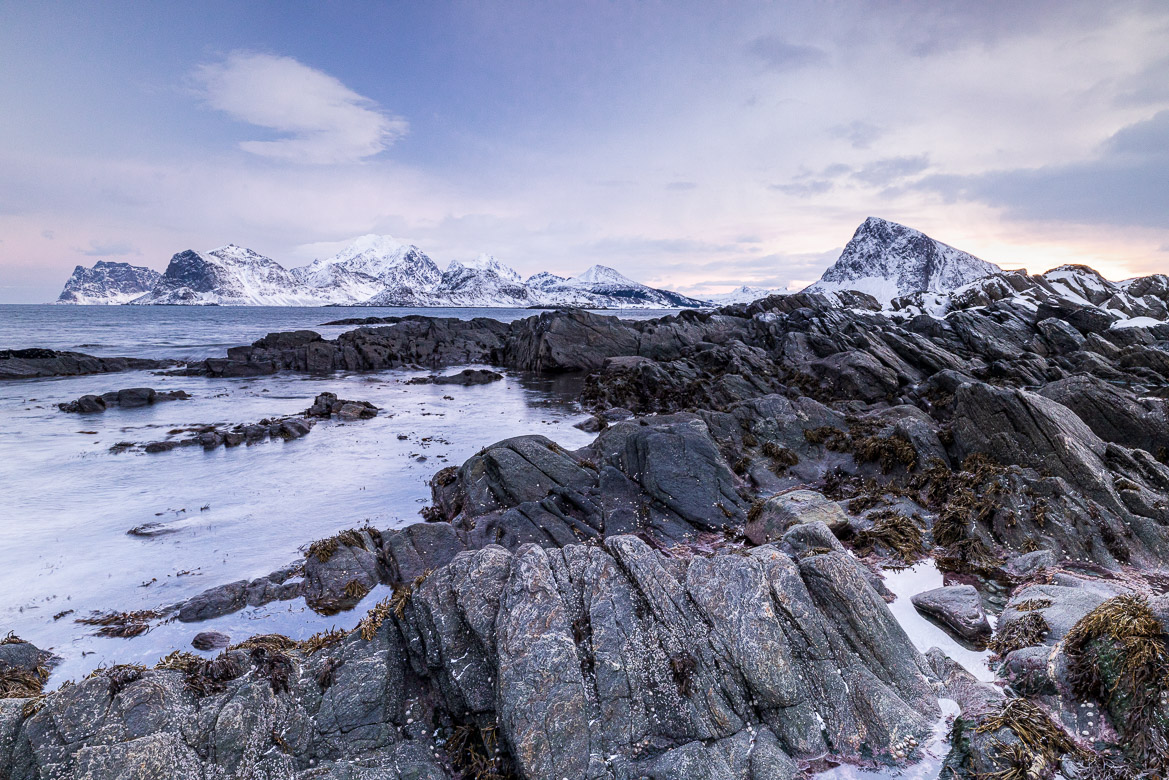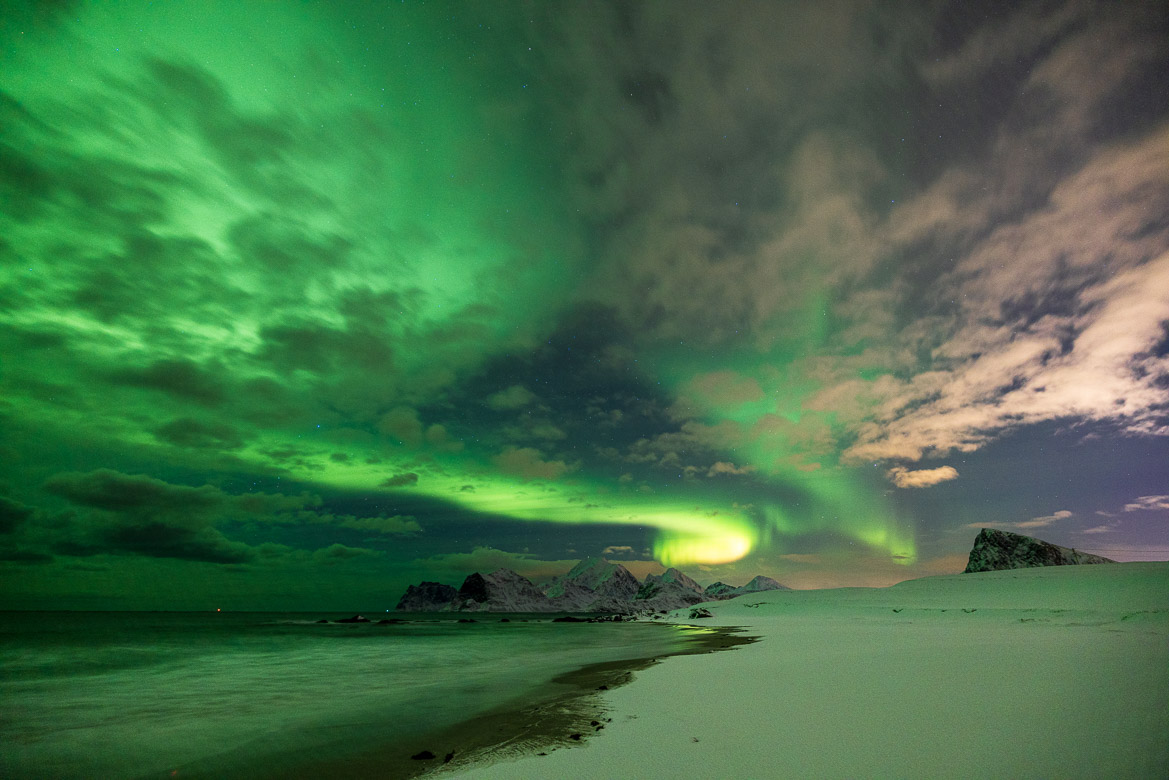
Solar storms send out electrically charged particles to all our planets including earth. Most particles are deflected from the earth, but some are caught in the magnetic field and accelerated down towards the poles. Those particles collide with molecules in the earth’s atmosphere and ionise those molecules. And when they are ionised, charged, in this way they take on colours of mainly green but sometimes also red and purple.
It can only be seen at night because at daytime the sunlight will overpower the weaker light from the Aurora. And for the same reason it can only be seen far away from light pollution. And far north (or south), close to the magnetic poles of the earth. And not during the summer, when it would be too bright also during the night.
So the ideal locations are looking north with uninterrupted views of the sky and far away from any light pollution. One such location is Storsandnes Beach near Myrland on the Northern tip of Flakstadsøya in Lofoten. We went there one night and waited for hours until we suddenly saw the Northern Light.
I must admit that what I saw in Iceland a few years ago was better, not because Iceland in any way is a better location for Northern Light, just that luck was truly with us at that time (see Aurora Borealis in Iceland).

We went back to the same beach at daytime. I had set up the tripod at the end of the beach (see the image above), but behind me is a large stretch of white sand, where Jennifer and I had stood with another group of photographers waiting for the illusive Aurora to show up. You recognise that the mountains in the background in the daytime image above are the same as captured in the images of Northern Light.

